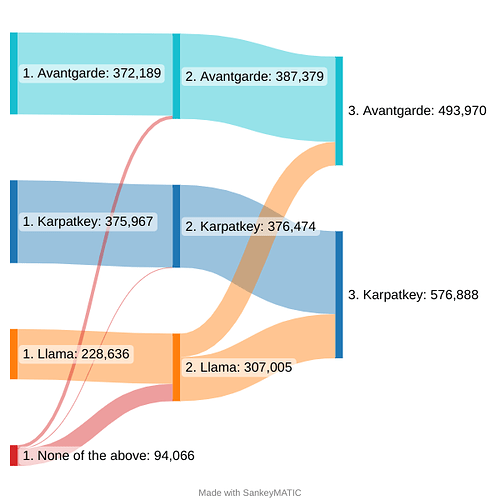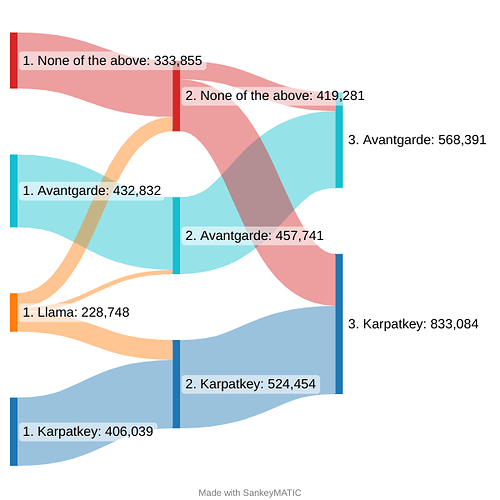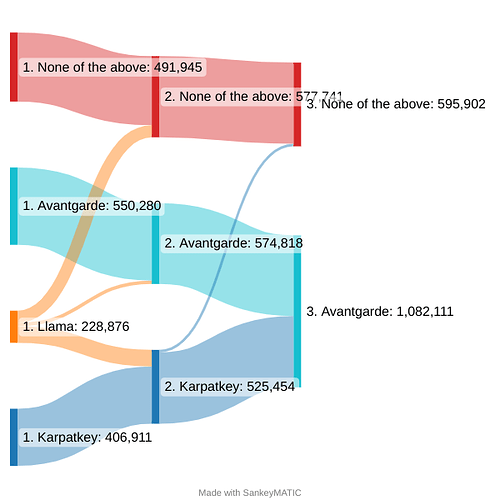Good morning!
No investment is risk-free. If it were, it would yield nothing.
Our approach to portfolio management is not to avoid risk entirely, but to focus on making sure we thoroughly understand the risks (and rewards) of a given investment through extensive research and diligence. We look to understand for example, how these protocols work, where, how often, and to what extent can things go wrong and what does the protocol stand to gain if things go according to plan? I spoke about this at length in @Griff 's Twitter space on Saturday.
Allocating an appropriately-sized portion of a portfolio to strong risk-adjusted opportunities is how an investment strategy generates returns. Sizing riskier positions appropriately also means if things don’t go to plan, the overall portfolio can still survive and even thrive. Maple and Goldfinch do indeed represent relatively higher risks than e.g. Compound and Aave, but we believe the proposed sizing in our model portfolio is appropriate for the return potential
Now, on to specific claims made:
Lending funds to Alameda in July 2022, after the Luna collapse, when it was likely already insolvent. The payment was due for January 2023, but for some reason, it was repaid fully in advance.
This is a red herring. Maple as a protocol had no outstanding direct exposure to Alameda at the time of its bankruptcy and lenders suffered no losses due to an Alameda default. Indeed, the pace of lending to Alameda had slowed, and lending was stopped from their single-borrower pool based on delegates’ concerns over the degradation of Alameda’s financial statements prior to the Luna collapse.
For those that are interested in listening to Maven11 and Orthogonal’s credit managers describe the process, there was a great webinar last week that walked through the Alameda collapse from their perspective.
- The last loan to Alameda from the Orthogonal USDC pool was a 90-day maturity issued on 17 Feb 2022 that was repaid in its entirety. This can be viewed in the Maple app here and verified on chain.
- The last loan to Alameda from the Alameda Single Borrower pool was a 90-day maturity issued on 21 May 2022 that was repaid in its entirety. This can be viewed in the Maple app here and verified on chain.
- The last Maple loan to Alameda was issued from the Maven 11 pool. It was a 90-day maturity issued on 4 June 2022 that was repaid in its entirety. This can be viewed on the Maple app here and verified on chain.
Open loans on crypto hedge fund Wintermute which was hacked and had funds on FTX
Open loans with crypto hedge fund Folkvang, partly owned by FTX
Two points here.
First, Wintermute and Folkvang, like every other market maker in the space, have funds trapped on FTX. Wintermute did have their DeFi operations hacked. However, thanks to proper counterparty management, none of the above have a material impact on the companies’ balance sheets and none resulted in losses to lenders. Notably, Folkvang was the first market maker to repay all their outstanding debt to counterparties to alleviate any concerns.
Second, the equity investment you’re describing in Folkvang was made by Alameda, not FTX. Alameda made equity investments in dozens (hundreds?) of crypto-native companies. Their investment in Folkvang was small as a percentage of the company’s total equity and came with no strings attached in terms of volume requirements on FTX itself (see first point regarding counterparty risk management).
Recently liquidated Crypto hedge fund Babel was using customer funds to trade.
From the lender’s perspective, the total return in the Orthogonal USDC pool since inception is 5.96% inclusive of the Babel default loss (before recovery), and 2.1% YTD as of Sep 2022. These numbers are exclusive of MPL rewards.
Babel suffered a material loss caused by poor option hedging strategy that went against their book of assets and subsequently caused liquidity issues. This ultimately forced the firm to freeze assets and suspend normal operations. Orthogonal proactively issued a notice of default due to their inability to continue normal business operations, which was a breach of the Master Loan Agreement.
Upon default, Orthogonal bolstered the Pool Cover with an additional $1MM of capital to insure an adequate buffer for future and outstanding loans.The Maple Foundation, on behalf of the pool, has continued pursuing off-chain recovery with debtors and other creditors under New York Law.
Orthogonal Trading borrowed $36MM from Maven 11
Orthogonal Credit is a separate operational team from Orthogonal Trading. Orthogonal Trading is a well-established market making firm with robust financials and solid track record. Orthogonal Credit is a dedicated team to the credit operation on Maple Finance with deep experience in loan origination, risk management and capital markets. Orthogonal Credit is able to leverage Orthogonal Trading’s subject matter expertise in crypto market marking to enhance their risk management thesis. Importantly, Orthogonal Credit never lends to Orthogonal Trading from its Maple pool. And the beauty of the blockchain is that this is observable in real time.
Borrower prepayment of loans into the Maven11 pool means that Orthogonal currently makes up a large portion of the debt outstanding. To alleviate this imbalance, Orthogonal has started early prepayment of their loans with another 10m USDC to be repaid early over the coming weeks.
Most other borrowers are not googlable; many are likely part of an opaque legal engineering structure from other crypto hedge funds.
This is also a red herring and an unfounded speculation. Although delegates take reputational risk into consideration as part of their DD process, whether a borrower is discoverable by the general public has no impact on their credit-worthiness.
Goldfinch lends funds to consumers in developing countries. There is the question of not if, but when these countries are going to default on their debts dragging down the whole market. Again.
It is true that Goldfinch borrower pools have exposure to developing economies. This exposure is diversified across many countries and is fully collateralized at the individual loan level. Defaults at the loan level, the sovereign level, the pool level - all possible! But Goldfinch’s diversified nature, as well as our portfolio’s diversified nature, mean that none of those hypothetical defaults would have a material impact on the Endowment.
Maple, as a lending platform, should be neutral from pool delegates. Instead, they support them, likely because they are also investors. This aspect is risky and I hope Maple will change it.
I’m not sure I quite understand this point, but assuming you mean that Maple should function without pool delegates, I disagree entirely. Maple, at its core (in my opinion), is a coordination and incentive alignment platform. Lenders’ incentives align with delegates’ incentives align with the protocol’s incentives. Lenders provide capital, delegates provide first-loss capital and underwriting services, and the protocol provides the platform. Without the delegate’s underwriting services, there would be no way to meaningfully evaluate borrower risk and the platform would cease to function.
Implicit in the “we should get rid of pool delegates” argument is the idea that these types of risks can be managed purely by on-chain or algorithmic systems. I would argue that while this is a worthy goal, market structure complexity means that it’s currently not a feasible one. Tools such as Credora, which gives visibility into a borrower’s assets and credit worthiness in real time, are just that - tools (and good ones!). They enable and empower human decision-making. In the case of Maple’s current roster of pool delegates, that decision-making is also informed by decades of risk management experience, such that delegates are able to recognize “another one of those” (cribbing from Ray Dalio, apologies).








